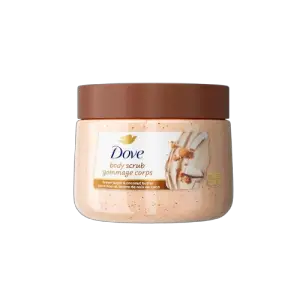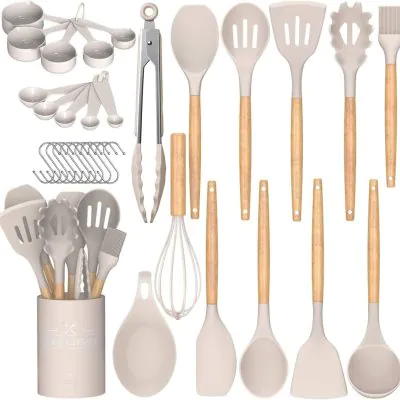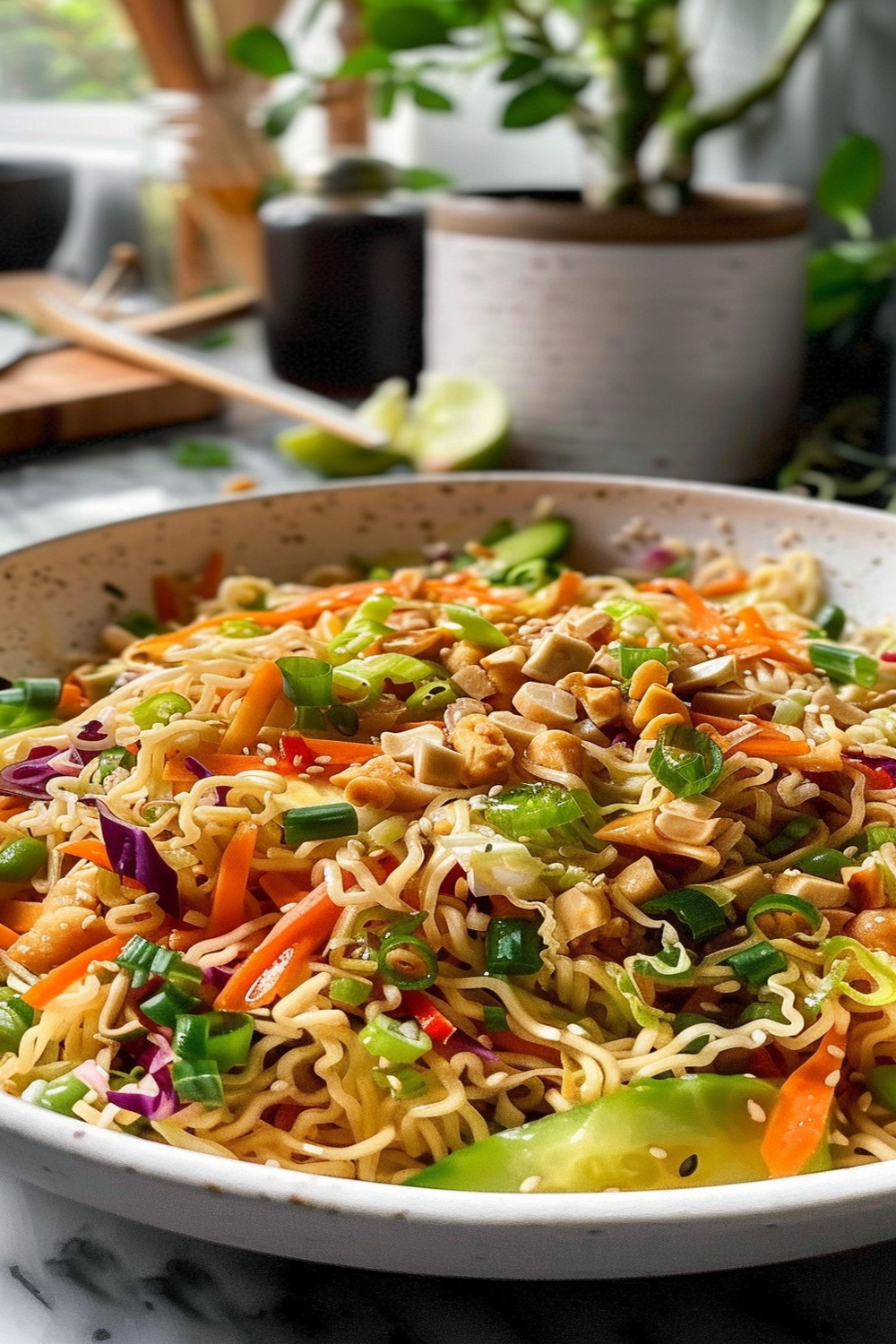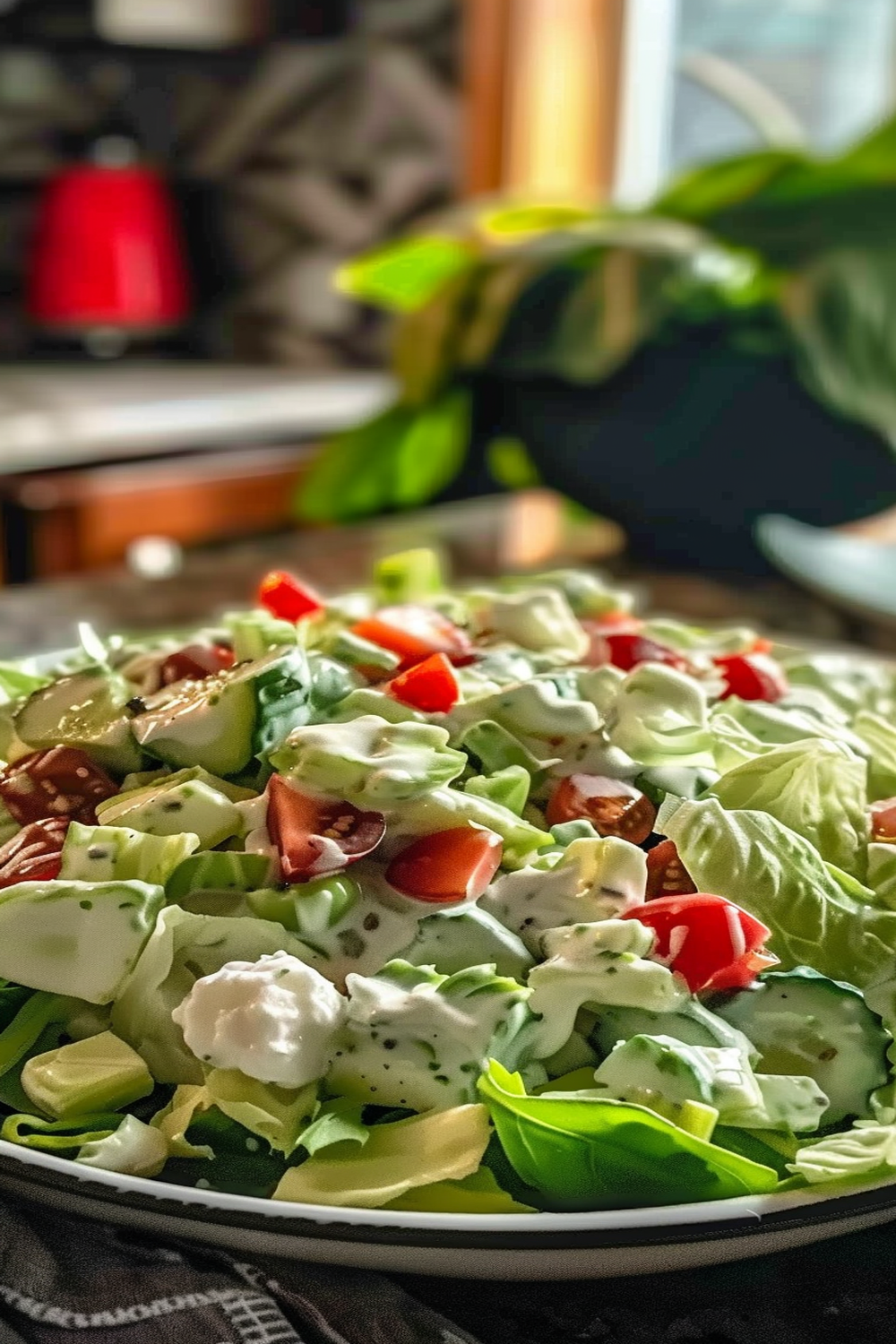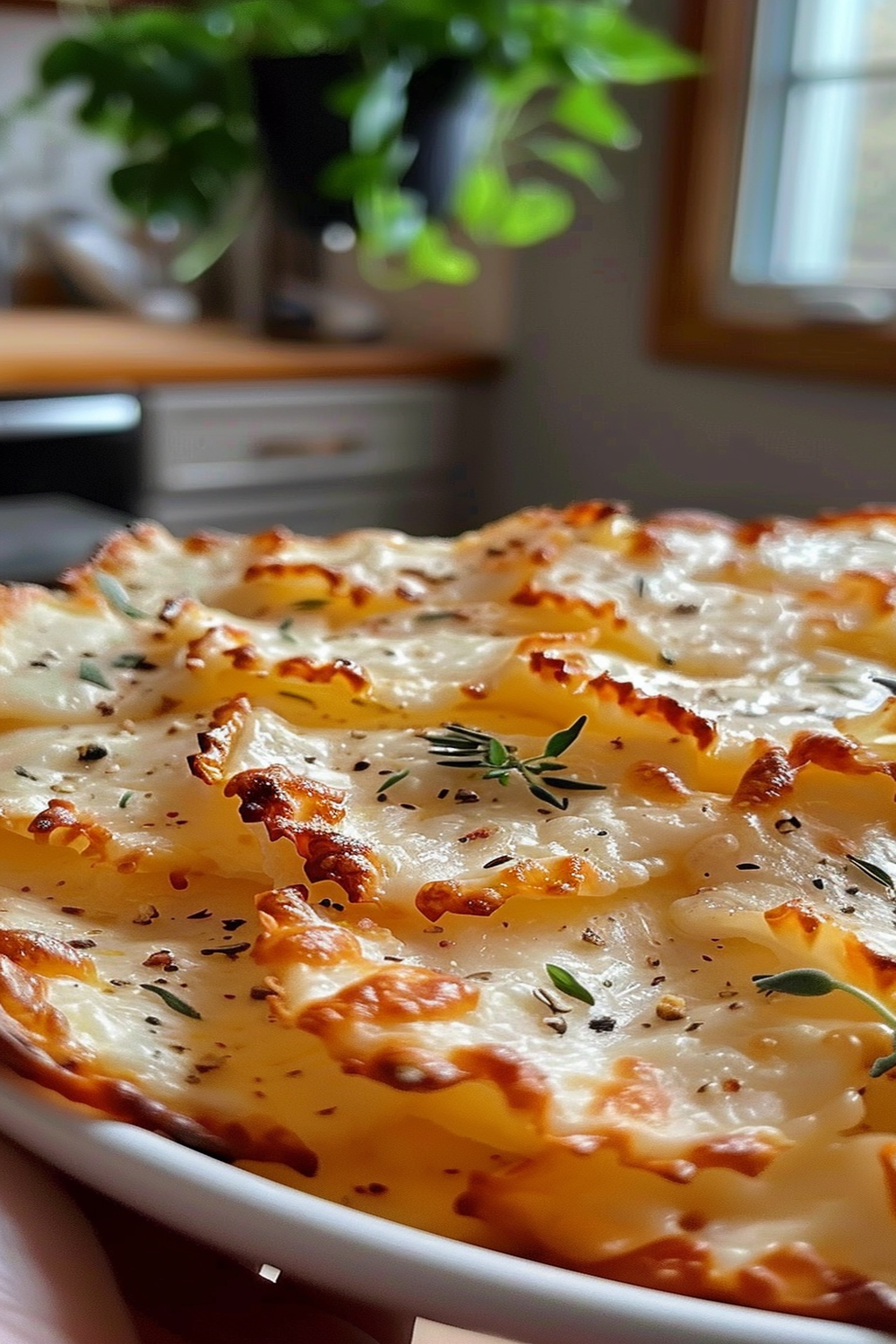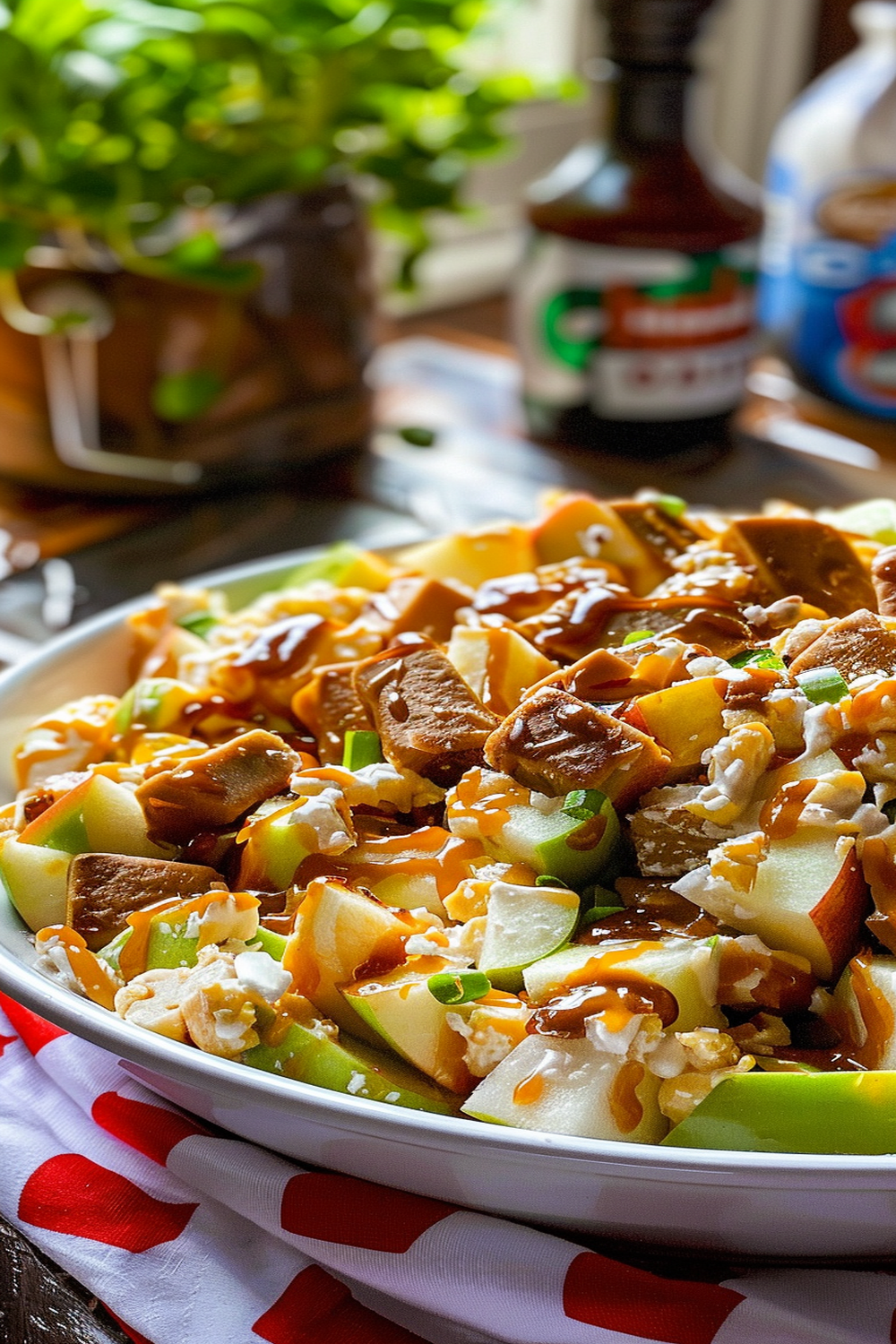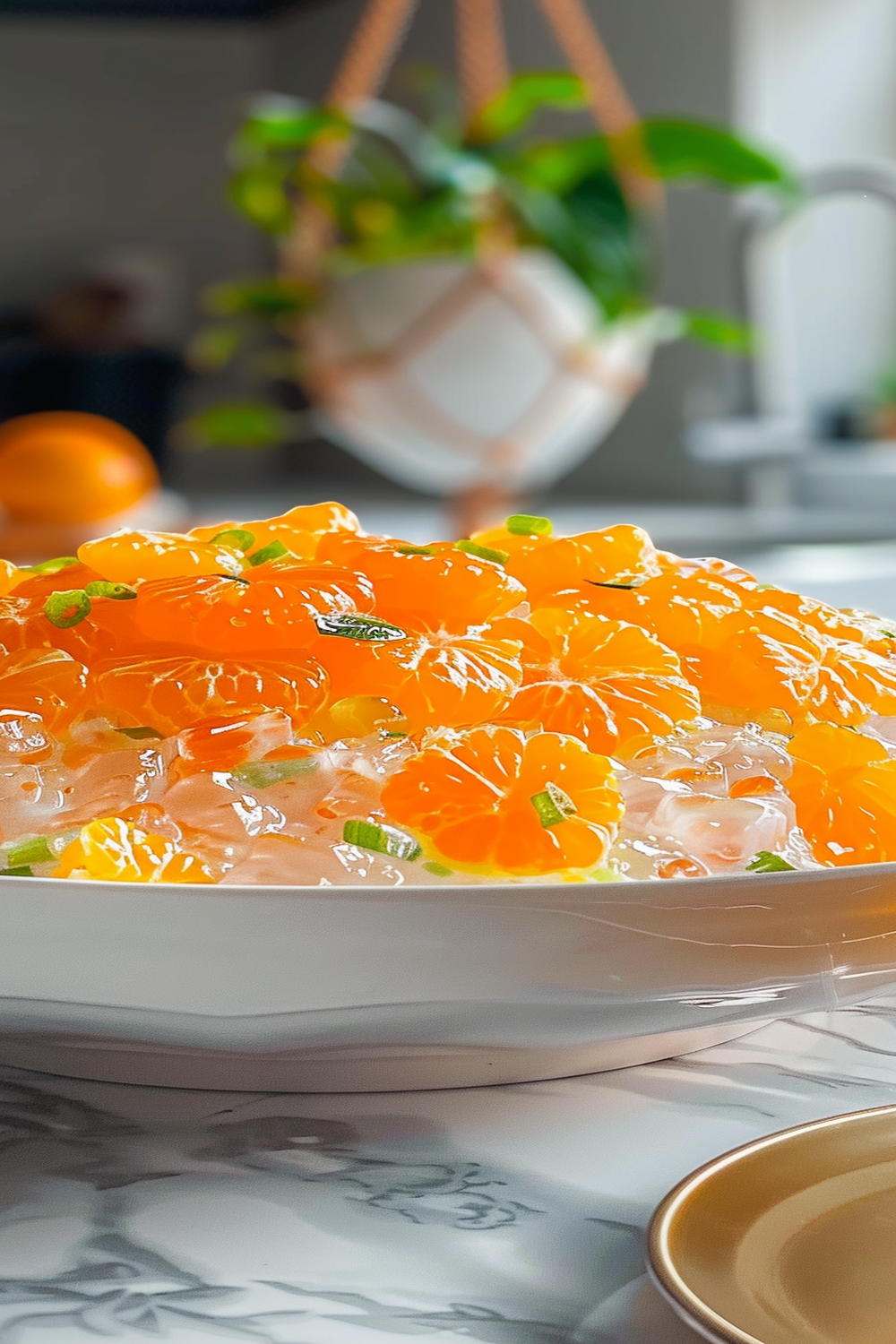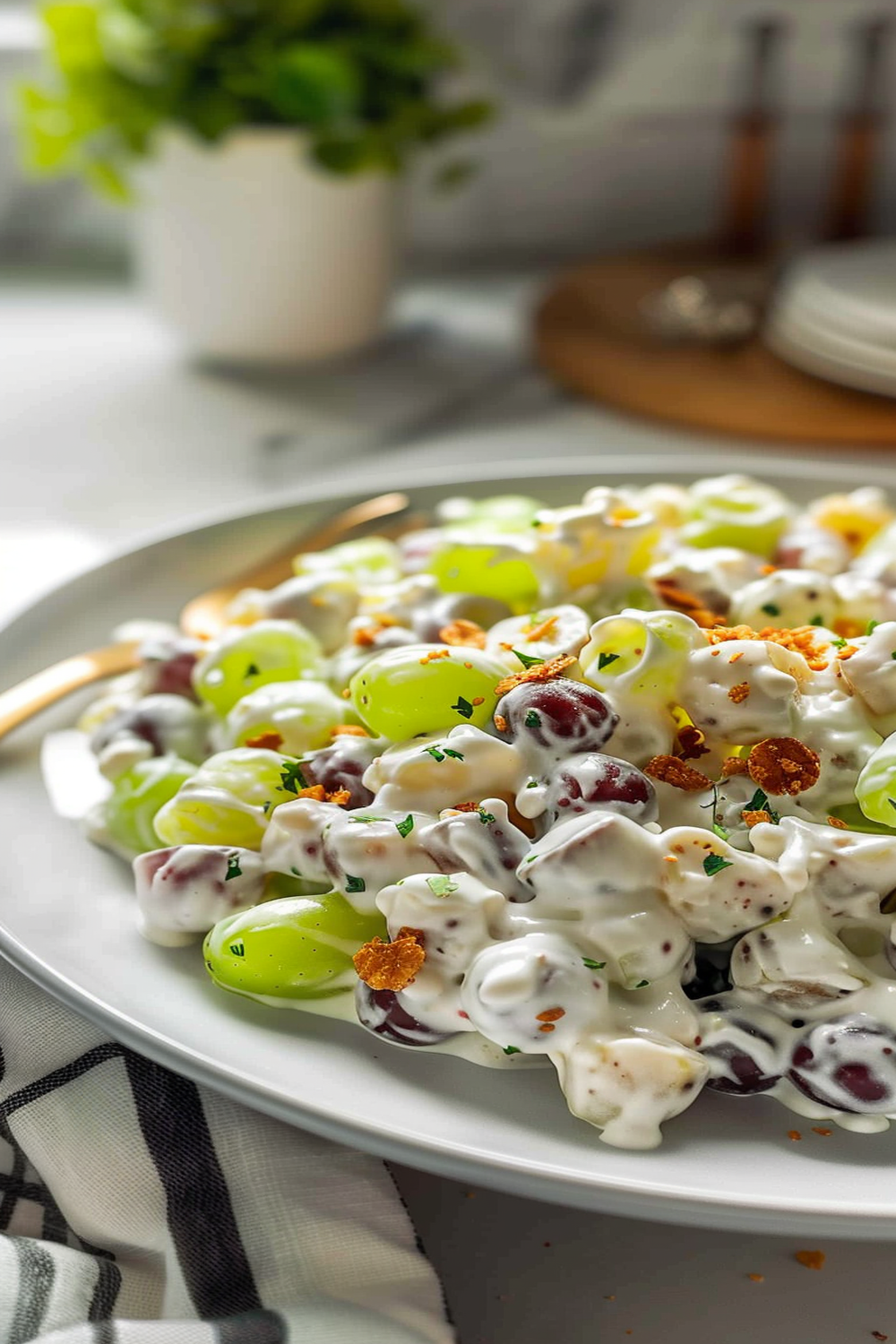Introduction and Quick Summary
If you’re looking for a vibrant dish that brings the taste of the tropics to your dinner table, this coconut curry shrimp recipe is just what you need. Bursting with flavor and easy to prepare, this dish combines succulent shrimp with a rich and creamy coconut sauce. The addition of spices and vegetables elevates the overall taste, making it a delightful meal that everyone will enjoy. In just under 30 minutes, you can create a satisfying dinner that impresses family or guests alike.
This coconut curry shrimp recipe is not only delicious but also healthy. The use of fresh ingredients ensures that you get essential nutrients while enjoying a mouthwatering experience. With its bright colors and aromatic scents, this dish is perfect for any occasion—from casual weeknight dinners to special gatherings. You can serve it over rice or with crusty bread to soak up every last drop of the flavorful sauce.
Get ready to dive into the step-by-step process of creating this delectable dish. Whether you’re an experienced cook or just starting in the kitchen, you’ll find that making this coconut curry shrimp is straightforward and rewarding. Let’s gather our ingredients and get started on this culinary adventure!
Main Ingredients
Shrimp (1 pound)
Fresh or frozen shrimp forms the star of our coconut curry shrimp recipe. When using fresh shrimp, ensure they are cleaned and deveined for a tender bite. Frozen shrimp should be thawed properly before cooking; simply place them in cold water for about 15 minutes. Opt for large or jumbo-sized shrimp for better texture and presentation.
Coconut Milk (1 can)
Coconut milk provides the creamy base for our sauce. Choose full-fat coconut milk for richness, which adds depth to the flavor profile of your dish. It balances out spices while lending a mild sweetness that complements savory elements perfectly.
Red Curry Paste (2 tablespoons)
Red curry paste infuses our dish with bold flavor and heat. This blend typically includes red chili peppers, garlic, lemongrass, ginger, and other spices. Adjust the quantity based on your spice tolerance; feel free to add more if you like it hot!
Bell Peppers (1 cup diced)
Bell peppers add crunch and color to your recipe. Use a mix of red and yellow bell peppers for an attractive visual appeal. They provide sweetness that contrasts nicely with the spicy notes from the curry paste.
Onion (1 medium)
A medium onion enhances flavor complexity and aroma in your dish. Sautéing onions until translucent allows them to release their natural sweetness while forming a flavorful base for your coconut curry.
Garlic (4 cloves)
Garlic brings pungency into play in our recipe while providing health benefits as well. Freshly minced garlic infuses each bite with savory goodness; however, you could use garlic powder as an alternative if needed.
Ginger (1 tablespoon minced)
Fresh ginger adds warmth and zest to our coconut curry shrimp recipe. It boosts digestion while enhancing flavors significantly when sautéed alongside onions and garlic.
Lime Juice (from 1 lime)
Adding lime juice brightens up all components within this dish! Its acidity balances richness from coconut milk beautifully—don’t skip this ingredient if you want maximum flavor impact!

How to Prepare Coconut Curry Shrimp Recipe
Step 1: Prepare Your Ingredients
Start by gathering all your ingredients before you begin cooking. This will help streamline the process as everything will be at hand when needed during preparation time! Clean and devein your shrimp if necessary before rinsing them under cold water briefly—set aside on paper towels afterward so they’re dry when added later on in cooking phase.
Next chop bell peppers into bite-sized pieces along with dicing onion finely; mince garlic cloves using either knife technique or garlic press depending on preference level—same goes for peeling fresh ginger root beforehand as well! Finally squeeze juice out from one lime leaving behind pulp inside—this will come handy once it’s time to finish off our delightful dish prior serving!
Step 2: Sauté Aromatics
Begin heating some oil in a large skillet over medium heat until shimmering—olive oil works great here—but feel free experimenting with other varieties too! Once hot enough add diced onion first letting it soften slightly (around 3-4 mins) stirring occasionally until becoming slightly translucent then follow suit by tossing minced garlic along with grated ginger next allowing aromas wafting through kitchen air enticing everyone nearby!
Continue stirring these ingredients together ensuring nothing sticks onto bottom surface—after additional minute add red curry paste mixing thoroughly until evenly coated around aromatics present thus releasing vibrant colors while deepening flavor development too!
Step 3: Cook Bell Peppers & Add Coconut Milk
After sautéing aromatic mixture proceed by introducing chopped bell peppers into skillet letting them cook down just enough so they retain slight crunchiness still—around 3-5 minutes should suffice! Now pour entire contents of canned coconut milk slowly into pot combining everything thoroughly ensuring no lumps remain visible throughout mixture formed thus far!
Once combined bring heat slightly higher allowing mixture simmer gently producing bubbling sounds indicating progress being made towards final stages meanwhile stirring frequently preventing anything from burning—not ideal at all during cooking process trust me!
Step 4: Add Shrimp & Seasonings
With everything simmering away it’s time finally introduce star ingredient left aside earlier i.e., raw shrimp into pot gently folding them through sauce ensuring evenly distributed throughout! Season generously using salt/pepper according taste preferences adjusting levels accordingly as necessary adding more lime juice if desired enhancing brightness even further whilst checking doneness every now again by observing color change occurring gradually turning pinkish hue signaling readiness!
Allow these lovely morsels cook away approximately 5-7 mins until they curl up nicely absorbing all flavors present enriching each bite taken—you can also cover skillet momentarily speeding things along but don’t forget about stirring periodically checking progress happening below lid covering top surface area!

Serving and Storing Tips
Serving Suggestions
Once cooked through properly serve steaming portions immediately over fluffy white rice garnishing additionally either fresh cilantro leaves chopped finely sprinkled atop plates alongside lime wedges squeezed liberally enhancing enjoyment levels even further! Alternatively consider presenting alongside crispy naan bread perfect dipping companion soaking up remaining delicious sauce left behind—you’ll find people coming back asking seconds guaranteed satisfaction all around!
Consider pairing this dish with refreshing side salads such as cucumber-tomato salad featuring tangy dressing complementing robust flavors present here too—it balances richness wonderfully keeping meal light yet fulfilling overall experience enjoyable without feeling overly heavy afterwards either making it ideal option any day of week really!
Storing Leftovers
Should there be any leftover coconut curry shrimp after mealtime don’t fret simply transfer contents carefully inside airtight container storing within refrigerator where they’ll keep fresh lasting around 2-3 days maximum! When ready for round two try reheating gently over low heat avoiding high temperatures which might lead rubbery texture ruining quality desired instead aim warming through reminding yourself not rush process taking time appreciate each layer flavor building back together again upon reheating activity occurring post initial cooking efforts made earlier!
Freezing leftovers works fine too but best practice suggests separating portions beforehand ensuring ease thawing later down line—you’ll find frozen versions may alter texture somewhat compared freshly made batches yet still enjoyable nonetheless just plan ahead accordingly if considering longer-term storage options available!
Mistakes to avoid
One common mistake when making a coconut curry shrimp recipe is not properly preparing the shrimp. Many cooks forget to devein and peel the shrimp, which can lead to an unpleasant texture and taste. Always ensure that you clean your shrimp thoroughly before cooking. This step not only enhances flavor but also improves presentation.
Another pitfall is using low-quality coconut milk. The richness of your coconut curry heavily depends on the quality of coconut milk used. Opt for full-fat coconut milk for a creamy texture and rich flavor. Avoid products with additives or preservatives, as they can alter the taste of your dish.
Overcooking the shrimp is another frequent error. Shrimp cooks very quickly, so timing is crucial. If you cook them too long, they turn rubbery and tough. Aim for just a few minutes on each side until they are opaque and pink. This ensures that your dish remains tender and delightful.
Failing to balance flavors can sabotage your coconut curry shrimp recipe as well. A good balance of sweetness from the coconut milk, acidity from lime juice, and heat from spices creates a harmonious dish. Don’t hesitate to taste and adjust seasonings as you go. Remember, cooking is an art that allows for personal touches.
Lastly, neglecting fresh herbs can diminish the overall flavor profile of your curry. Fresh cilantro or basil adds brightness and enhances the dish’s aroma. Always garnish with these herbs right before serving to keep their vibrant flavors intact.

Tips and tricks
When preparing your coconut curry shrimp recipe, consider marinating your shrimp beforehand. A simple marinade of lime juice, garlic, and ginger infuses flavor directly into the shrimp and adds depth to your dish. Aim to marinate for at least 30 minutes for optimal results.
Use a thick-bottomed pan or skillet when cooking your curry. This type of cookware distributes heat evenly, preventing any ingredients from burning or sticking to the bottom while ensuring everything cooks thoroughly. The right pan makes a significant difference in achieving the perfect consistency of your sauce.
Incorporate vegetables for added nutrition and color in your coconut curry shrimp recipe. Bell peppers, snap peas, or spinach are excellent choices that cook quickly and complement shrimp beautifully. Adding vegetables not only enhances visual appeal but also boosts the dish’s health benefits.
For an authentic flavor experience, include fresh spices instead of pre-ground options when possible. Toasting whole spices like cumin seeds or coriander before adding them to your dish releases their natural oils and elevates the overall flavor profile significantly.
Lastly, serve your coconut curry shrimp with a side of jasmine rice or quinoa to soak up all that delicious sauce. This pairing complements the meal perfectly while adding texture without overpowering it.
Suggestions for coconut curry shrimp recipe
To bring out the best in your coconut curry shrimp recipe, try adding a splash of fish sauce or soy sauce for umami depth. These ingredients enhance savory notes without overwhelming other flavors in the dish—just a small amount goes a long way in creating a more complex flavor profile.
Consider experimenting with different types of protein if you want to switch things up occasionally. Chicken or tofu can be excellent substitutes if you’re looking for variety while retaining that delicious coconut curry essence.
Utilizing seasonal ingredients can also make a significant difference in freshness and taste. Using what’s available locally during various seasons ensures you’ll have vibrant produce, which will enhance both presentation and taste in your curry.
If you’re looking for a spicy kick in your coconut curry shrimp recipe, don’t shy away from adding chili paste or fresh chilies to suit your heat preference. Adjust according to how spicy you want it; this customization allows everyone at the table to enjoy their meal just how they like it.
Lastly, remember that leftovers can be fantastic! Store any extra portions in airtight containers in the fridge for up to three days or freeze them for later enjoyment—this way, you can savor this delightful dish even after you’ve cooked it!

FAQs
What type of shrimp should I use for my coconut curry shrimp recipe?
For best results in your coconut curry shrimp recipe, opt for medium to large-sized raw shrimp—preferably deveined with tails removed for easy eating. Fresh shrimp generally offers superior taste compared to frozen ones; however, if using frozen is necessary due to availability constraints, ensure they’re fully thawed before cooking for even results.
Can I make my coconut curry shrimp recipe ahead of time?
Yes! You can prepare components separately ahead of time—cook the aromatics like garlic and ginger first before storing them in an airtight container until ready to use later on in making your dish fresh again when needed! However, refrain from cooking the actual shrimp until ready since they are best served immediately after cooking—they will become rubbery if reheated multiple times!
What sides pair well with this dish?
Serving jasmine rice alongside your coconut curry shrimp recipe makes an excellent pairing! The delicate texture complements rich sauces beautifully while absorbing all those delightful flavors too! Additionally, consider offering naan bread as another option—it’s great at soaking up extra sauce!
How do I store leftover coconut curry?
Store any leftover portions of this delicious meal by placing them into airtight containers once cooled down completely; refrigerate them promptly within two hours after cooking! They last up until three days max stored correctly; reheat gently over low heat while stirring occasionally until hot throughout before indulging again!
Can I modify spice levels in my coconut curry?
Absolutely! Adjust spice levels according to personal preference by incorporating fewer spices initially into recipes—you may always add more later based on individual tastes during preparation stages! For those who enjoy spiciness levels higher than average expectations would recommend starting off slowly then gradually increasing quantities till satisfaction achieved!
Is there a vegetarian version of this recipe?
You can definitely create a vegetarian variant by substituting tofu instead of shrimps while maintaining other elements intact! Using vegetable broth along with other veggies (like bell peppers) brings forth wonderful flavors without sacrificing authenticity found within traditional versions made originally using seafood options!
Conclusion
In summary, crafting an exceptional coconut curry shrimp recipe requires attention to detail at every step—from selecting high-quality ingredients like fresh shrimp and premium coconut milk to balancing flavors effectively throughout cooking processes involved therein! Avoid common mistakes such as overcooking protein elements or neglecting essential garnishes; these aspects play significant roles when it comes down towards achieving desired outcomes through culinary endeavors undertaken here today together through shared experiences had by many alike across kitchens everywhere worldwide… Enjoy every flavorful bite along each journey made through culinary pathways paved ahead!
Print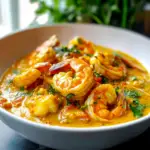
coconut curry shrimp recipe
- Author: Sofia
- Total Time: 25 minutes
- Yield: 4 servings 1x
Description
This Coconut Curry Shrimp is a tropical delight that combines tender shrimp with a rich, creamy coconut milk curry sauce. Packed with bold flavors from spices like turmeric, ginger, and garlic, this dish is perfect over rice or with naan for a flavorful, comforting meal.
Ingredients
- 1 lb large shrimp (peeled and deveined)
- 1 can (14 oz) coconut milk
- 2 tbsp red curry paste
- 1 tbsp olive oil
- 1 onion (diced)
- 3 cloves garlic (minced)
- 1-inch piece fresh ginger (grated)
- 1 tsp turmeric
- 1 tsp cumin
- ½ tsp chili flakes (optional)
- 1 tbsp soy sauce
- 1 tbsp brown sugar
- ½ tsp salt
- Fresh cilantro (for garnish)
- Cooked rice (for serving)
Instructions
- Cook the aromatics: In a large skillet, heat olive oil over medium heat. Add the diced onion and sauté for 3-4 minutes until softened. Add garlic and ginger, and cook for another 1-2 minutes until fragrant.
- Add curry paste and spices: Stir in the red curry paste, turmeric, cumin, and chili flakes (if using), and cook for 1-2 minutes to release the flavors.
- Add coconut milk and simmer: Pour in the coconut milk, soy sauce, and brown sugar. Stir to combine, and let the mixture simmer for 5-7 minutes to thicken slightly.
- Cook the shrimp: Add the shrimp to the skillet and cook for 3-4 minutes until they are pink and cooked through.
- Serve: Remove from heat and garnish with fresh cilantro. Serve over cooked rice or with naan bread.
Notes
- You can adjust the spice level by adding more or less chili flakes or curry paste.
- For a richer flavor, use full-fat coconut milk.
- Add vegetables like bell peppers, spinach, or peas for extra color and nutrition.
- Prep Time: 10 minutes
- Cook Time: 15 minutes


